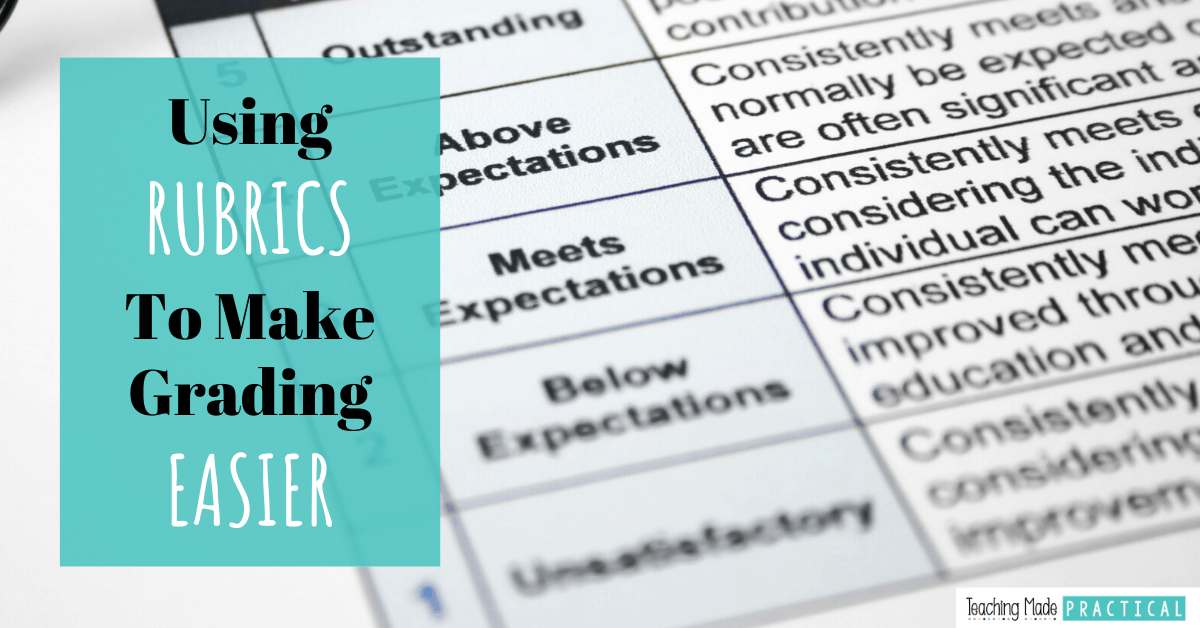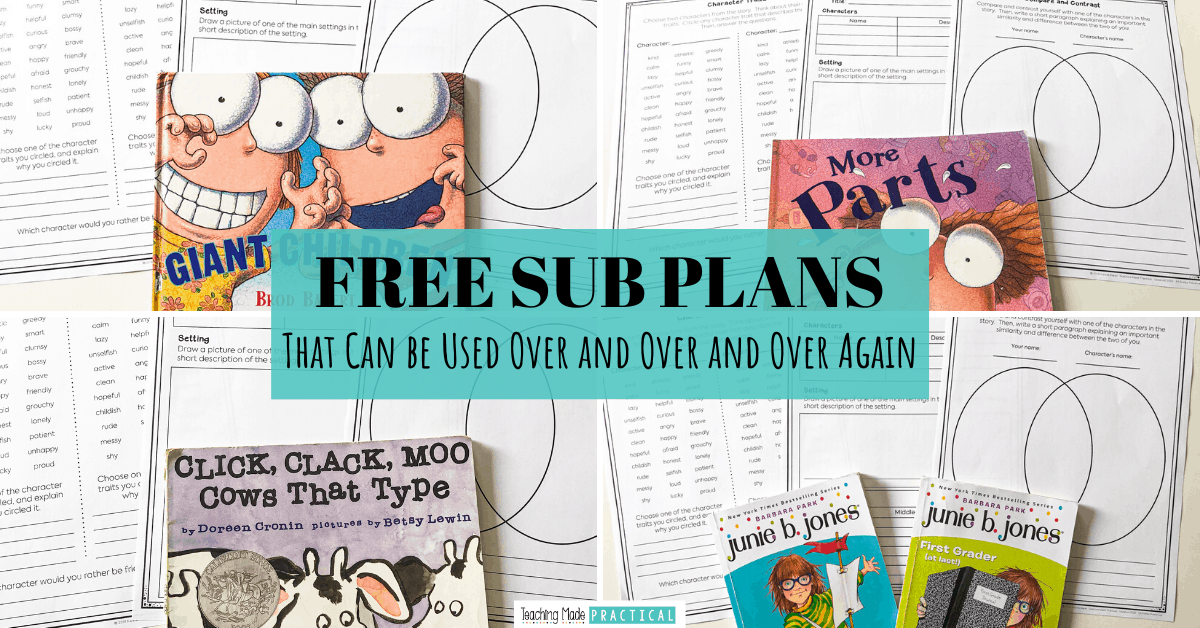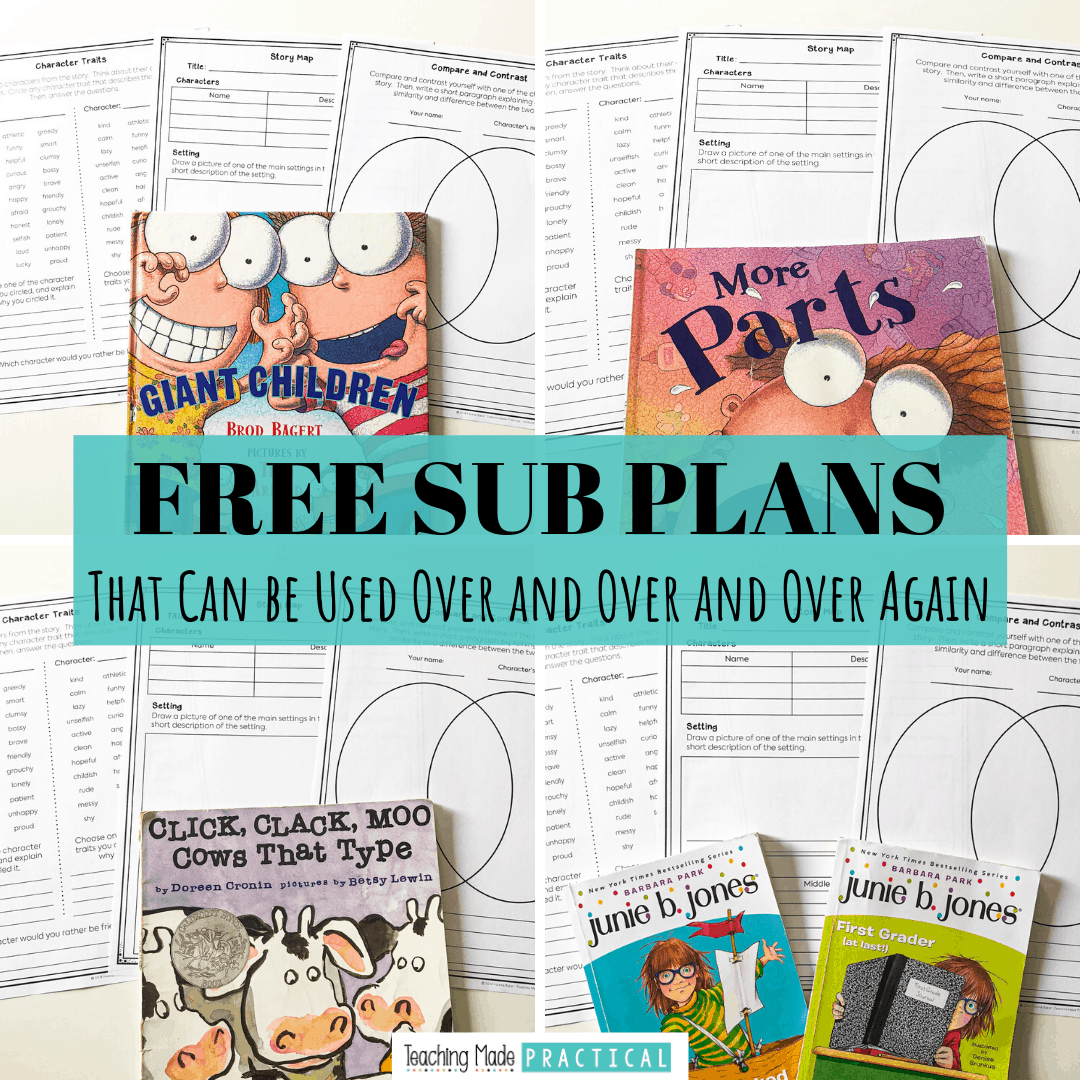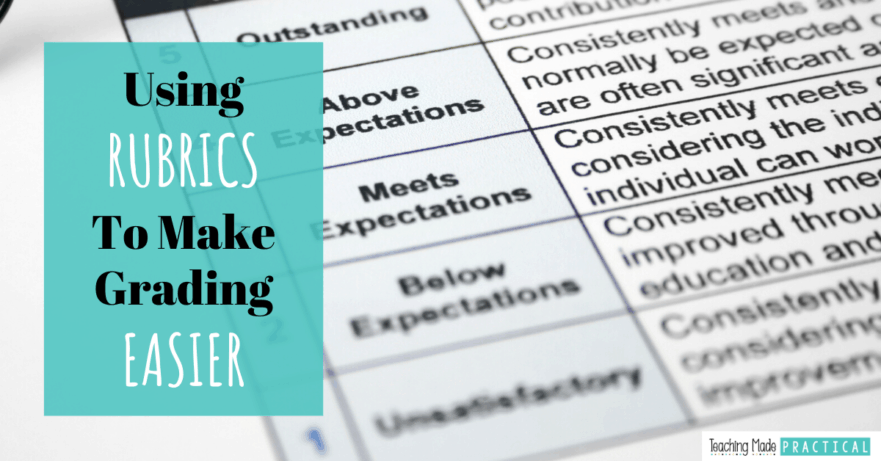
What is a rubric? Well, “a rose by any other name would smell as sweet,” and honestly, a rubric is just a fancy name for a user-created table for the distinct purpose of evaluating a student’s work. That’s it!
So why would teachers even bother to use rubrics for grading? You and I know that any teacher worth her salt can look over a project or essay and ascertain the grade without breaking a sweat. That’s a skill that emerges pretty quickly in our profession, not unlike knowing when a kid is making faces behind your back.
Nonetheless, I’ve got to confess that I’m pretty sold on rubrics, having used them for years.
But rather than rely on my personal experiences, I decided to survey some other experienced teachers to see what they had to say. Their responses generally fell into three main categories: quick grading, fair grading, and transparent grading.
The Best Free Online Rubric Makers
Before explaining all the reasons why you should be using rubrics in your classroom, you should know that there are plenty of free tools to make creating rubrics for your 3rd, 4th, and 5th grade classrooms easy.
Rubistar - This free rubric generator popped up again and again in recommnedations from teachers. Once you’ve created an account, you can not only save any rubrics you create, but also have access to a shared bank of rubrics. The supply is pretty much endless.
teAchnology - If you are new to teAchnology, you may want to poke around in the website a bit. I know that may become a wormhole that can take you away for hours. If you don’t have the time, this is the link to the rubric maker...which is free.
Google Suite for Education Add-On - If your district is like mine, you are all over Google Suite for Education. You may already be using the rubric creator that is an integral part of Google Classwork. If so, then this may be your best choice for rubric creation. This link will take you directly to the add-on, “Orange Slice.” It’s sweet.
Rubric Maker - If you like simple and straightforward and don’t want to create an account etc. etc. then Rubric Maker may be the site for you. You can ignore all the pretty links at the bottom of the page and focus on getting the job done without a lot of complications.

Rubrics Allow for Quick Grading
Some teachers find that rubrics streamline the grading process, although one teacher I surveyed said that it could be at times, “tedious.” Personally, I’ve found that it serves to keep my tired teacher brain focused.
Moreover, if you take the time to develop a rubric around one particular skill, say like a writing skill, you can hone in on the particular attributes you are scoring on a student’s project or paper. More on this later.
For me, keeping my rubric pretty simple works the best, which means I need to identify four, five or a maximum of ten easily scorable elements. I like it when rubric categories add up to 100%. Once I’m done scoring a paper I have the percentage score and I’m ready to move on to the next paper.
Here’s an idea: As I’m creating the rubric, occasionally I’ll end up with an odd number of points. In that case I’ll often add “On Time” as one of the criteria, drawing the student’s and the parent’s attention to the value of timeliness in student work. At my school and on my fifth grade team we’ve agreed to accept late work. Maybe your school or grade doesn’t do that. Honestly, I am conflicted about this topic, but have chosen not to die on that hill.
Rubrics Allow for Fair Grading
The teachers I surveyed shared their opinion that rubrics allow them to be more objective. Some said rubrics force you to grade each student more fairly because the criteria is right there on the rubric.
Christen Bailey McCracken (General Myer Elementary, at Fort Huachuca, Arizona) stated that, “...[rubric use] eliminates grading being done solely on the ‘opinion’ of the teacher. There can still be some subjective grading using a rubric (collage is neatly done, demonstrates creativity, etc.); however, students know exactly what expectations are upfront when you provide them with the rubric and understand how they will be graded.”
I have to be honest and tell you that I know myself well enough that I need to be intentional and avoid looking at the name on an essay paper. We begin to form perceptions, don’t we? Be honest with yourself.
So to get around these preformed prejudices I resolutely staple the rubric to the top left of the paper over the student’s name. Yes, some of the students have distinctive penmanship (or lack thereof), but often I surprise myself.
You see, some students are turned on when they write to a particular topic and exceed their previous performance. That is a golden moment for this veteran teacher.
Rubrics Allow for Transparent Grading
The consensus among those teachers surveyed for this article is that sharing a rubric with students before beginning an assignment clarifies teacher expectations. Seems like a no brainer, right? But sometimes we miss the obvious in our struggle to get everything done.
Stop and take a breath. Always remember our first consideration with any grading system we use is how it will serve our students. We always want things to be clear for them.
Julie Muenster (Sunshine Bible Academy, Miller, South Dakota) wrote, “I use a modified rubric. It sets the expectations for the students. They can't say, ‘You didn't say we needed to do that!’ It also gives me room for subjectivity. I use them for writing projects, and I like the leeway to consider the student's abilities and progress in determining the grade.”
I love strategies that head off student complaints at the pass. Giddy-up!
Pratia Jordan, who teaches middle school in Houston, Texas, explained, “I didn't use them frequently, but I had students actually request them so I started using them more. I like the way they empower students to make informed choices about the grade they want to earn. In teaching a subject like history, which can be seen as subjective at times, it's nice to bring in elements of ‘sureness’ when it comes to grading, for myself, parents and students.”
And what’s better than students requesting a strategy that also works for you! That’s called a “win-win,” people.
Another aspect of transparency is taking the time to introduce the rubric and explain it thoroughly to the kiddos.
Jennifer Tedman (Sorrento Elementary, Sorrento, Florida) stated, “Rubrics give the student a checklist to refer to while working on the assignment that will support success and a good grade. If the student does not have this tool to utilize, he/she may forget the specifics of the grade. The student will also be going into the assignment unsure of the expectations of the teacher. The rubric offers a piece to constantly be referred to as the student is working towards success.”
Now that’s student-centered grading and a highly professional attitude. What a great reminder from a seasoned educator.
Rubrics Are Easy for Parents to Understand
Another consideration is helping parents understand grades. My first principal in Florida, the wonderful Ted Wolf, always emphasized grading that is easy for parents to understand. He wasn’t a fan of weighted grades or complicated systems that had to be explained.
With Ted’s advice in mind, I like to consider those busy, overburdened parents as they look over their child’s papers at home. A rubric takes the weight off the student to explain the “why” behind their grade. The rubric does that for them. Jennifer Tedman emphasized this point when she made this comment: “I also feel like rubrics offer parents the additional information they want when reviewing their child’s grades.”
Rubrics Support Scaffolded Instruction
In the second of Covey’s well known seven habits, Stephen R. Covey proposes that we should, “Begin with the end in mind.” I utilize this strategy when teaching writing.
As tempting as it may be, I can’t in all good faith overwhelm students with every skill needed for a successful essay on the first go round. On top of that, I can’t assume that another teacher has embedded a skill in their ten or eleven year old brain. And I can’t expect them to learn it all simultaneously. That would be a lot like expecting them to drink from a fire hose! Now try to get that fun little picture out of your head (wink wink). But I know my “end” and I can scaffold my writing instruction to get them there.
And contrary to what we would like parents to believe about teachers and teaching, we insiders know there is nothing magical going on here. We are simply putting best practices to use in our classrooms. We are utilizing what we learned about pedagogy. So I begin by sussing out particular writing skills and teaching them one at a time in incremental steps. For example, the first essay I assign I only score on conventions.
Rubrics are a powerful tool in my big picture plan for writing instruction. I know, educational jargon lovers...scope and sequence.
So on that first essay, I want complete sentences, proper capitalization, subject verb agreement, etc. I’ve taught all this explicitly in class and now it is time for students to demonstrate these skills holistically. Later on I’ll hone in on organization, focus, purpose, audience, etc. etc. Honestly, we usually run out of time before we run out of things to work on in writing.
You probably recognize that this is simply spiraling instruction as I add skills, never allowing students to give up on the previously taught skill. So my strategy is to give my students sips from the proverbial garden hose as opposed to trying to force them to drink from the aforementioned fire hose.
Using this method, I can build student proficiency over time and writing conferences are focused on one thing at a time instead of everything in the writer’s world. Then I create a rubric with as few as five or as many as ten qualities I want to see in the finished product. I have individual writing rubrics that are tailored to how I teach essay writing.
Truly, the rubric helps me as a teacher and my students hone in on the specific skill I’m requiring for that particular essay. Its super hard sometimes, but I really try to talk only about one skill at a time while layering those skills up over time...building confidence and proficiency...sip, sip, sip...
On a half-page rubric, I assign point values for each quality to total 100 points. It’s an elegant system and once I get started grading papers, I get in a rhythm. Zip, zip, zipping right through that stack of papers.
I’ve been known to grade 60 student essays...the most tedious part of teaching writing...in less than three hours. I joke with the kiddos that there is an elf that comes in at midnight and grades all their work.
All kidding aside, we know that it is our processes that govern the effectiveness of our productivity. We aren’t machines, but sometimes we need to mechanize our processes. Rubrics are one gear in the machine that could create some wiggle room in your life. And who doesn’t like a little wiggle in their room?
Other Helpful Articles on Rubrics
Northern Illinois University Center for Innovative Teaching and Learning - Everything I’ve stated here, but more in depth with lots of examples and explicit instructions.
Berkeley Graduate Division - Addressed to graduate students who are probably better at their majors than at teaching, this article gives samples of rubrics that I’ve never considered before. Well worth a five minute look.
TeAchnology - This is an interesting twist on the topic...students grading themselves. If this fits with your teaching philosophy then this article is for you.

Never Stress Over Sub Plans Again!

Make copies, find a fiction book, and you'll be ready for any emergency that comes your way!

